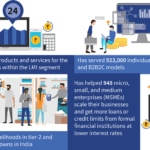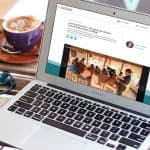Coronavirus is Shining a Light on America’s Lack of Paid Sick Leave: Here’s How Savings Can Help
As the COVID-19 pandemic (commonly called coronavirus) unfolds, the Centers for Disease Control (CDC) is issuing a number of common-sense recommendations – including one to stay home if you’re sick. Because the disease spreads primarily from person-to-person contact, remaining out of close personal contact with others not only allows the sick person to recover, it also advances the broader public health goal of reducing the spread of the disease.
If you’ve ever had the flu, you might wonder why this recommendation is even necessary: Why would someone choose to go into work when they’re feeling ill, instead of staying home and getting the rest they need to recover? But for many lower-income and gig economy workers, taking a sick day is unpaid, so staying home from work has immediate and serious financial implications. A decision about personal and public health becomes, in effect, a decision about family finances. According to Bureau of Labor Statistics data, only around 30% of workers among the lowest 10% of wage earners have paid sick leave. The lack of paid sick days has a disproportionate effect on black workers, 36% of whom have no paid sick leave, and Latinx workers, 48% of whom do not have sick days.
Recent Commonwealth research highlighted another element of this challenge: Our 2019 survey of 1,300 low-income workers showed that those with less than $400 in liquid savings were under significantly more financial stress than their counterparts. Without a financial cushion, concerns about paying for bills and other necessities may force a person to work through the flu or other illnesses, regardless of CDC recommendations. And this lack of budgetary and scheduling flexibility can lead people to forgo purchasing medicine or visiting the doctor – potentially worsening or prolonging some illnesses.
Growing awareness of the link between paid sick leave and health – largely driven by the coronavirus outbreak – is leading policymakers, employers and public health advocates to explore new solutions. But while changes in paid time off policies and social insurance might one day address this issue, there is a way to provide people with more options to stay home sick now. Even a few hundred dollars put away in savings can give someone enough slack in their budget to miss a few days of work, pay for a trip to urgent care, or stock up on medication.
Short-term, liquid savings is the “Swiss Army Knife” of financial resilience – versatile, low-cost, and able to help against a variety of financial challenges working people face. And importantly, unlike with credit-based solutions, drawing on savings to manage financial challenges leaves no “hangover” – no debt to be repaid. Providing an opportunity to effectively self-fund a sick leave is one of the many benefits a stash of liquid savings can provide.
Even relatively small amounts can make a substantial difference: Research has shown that just $250 to $750 in liquid savings can help a family weather a financial shock, reducing their likelihood of paying bills late, missing rent or needing public benefits. And crucially, in this age of global pandemics, leveraging savings to insulate a family from risk can also work to insulate their community from illness. As a person feels empowered to take care of themselves, with the financial resources to get diagnosed, medicate or stay home sick, they’re less likely to spread a virus to others.
In moments of crisis like this, it’s important to seek out proactive solutions. For instance, concerned employers can make small initial seed deposits in employee accounts to send a message of support and encourage further saving over time. When employers take action to encourage and enable small savings in this way, they not only provide employees with needed funds, they also signal to their workers that they’re attuned to their financial lives – and in turn, that can make workers feel safe to take sick days. Even a small savings cushion can provide just the psychological push someone needs to take the sick days they need to recover. For example, our research has shown that straightforward employer interventions like the opportunity to split a paycheck into both checking and savings automatically would help even lower-income workers save, which also has the psychological impact of reducing day-to-day stress.
In light of the spread of COVID-19 through the U.S., ensuring that all Americans have access to easy, intuitive ways to build liquid savings should be a priority for us all. The benefits of this financial cushion will reverberate at work, at school – and across both urban and rural areas. Improving the financial health of vulnerable community members will improve the physical health of the nation as a whole.
For two decades, Commonwealth has focused on a collaborative, multi-sector approach to producing sustainable savings cushions, with the belief that this foundation is core to building wealth and financial health among the communities that need it most. But now that the outbreak of the COVID-19 virus has turned a spotlight on sick leave policy in the U.S., this mission has taken on new urgency. As a partner in BlackRock’s Emergency Savings Initiative, we are working with major companies to build innovative savings solutions for customers, employees and other stakeholders. Now more than ever, it’s essential that employers, financial institutions, technology innovators and other stakeholders increase their focus on building savings for all Americans.
Timothy Flacke is Executive Director of Commonwealth.
Photo courtesy of Free to Use Sounds.
- Categories
- Coronavirus, Finance, Health Care



